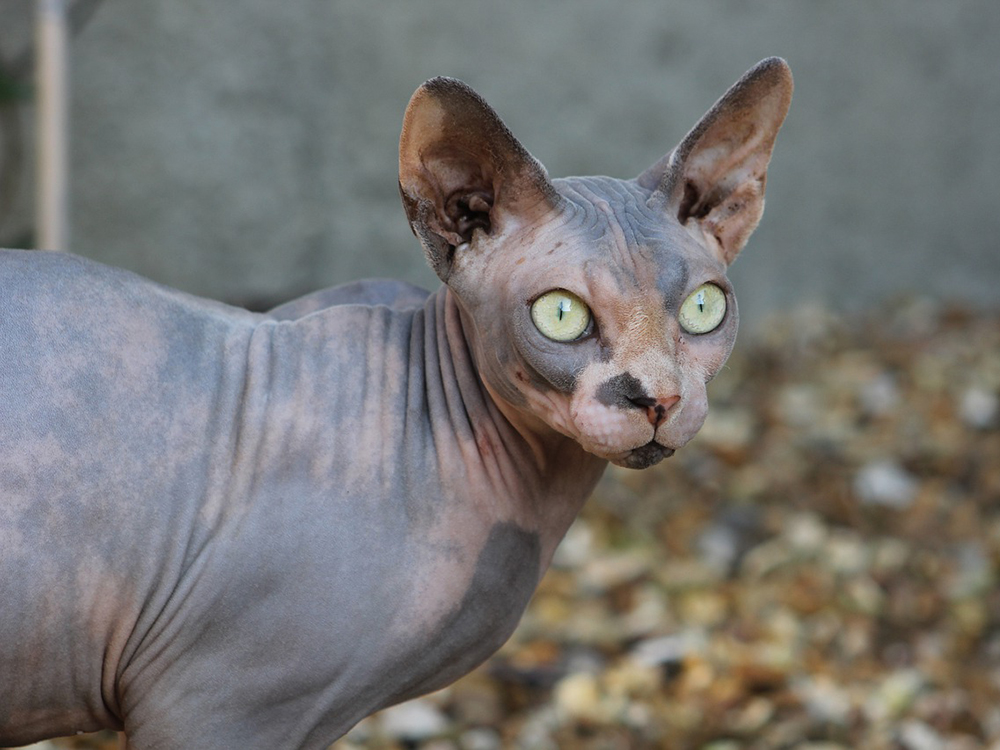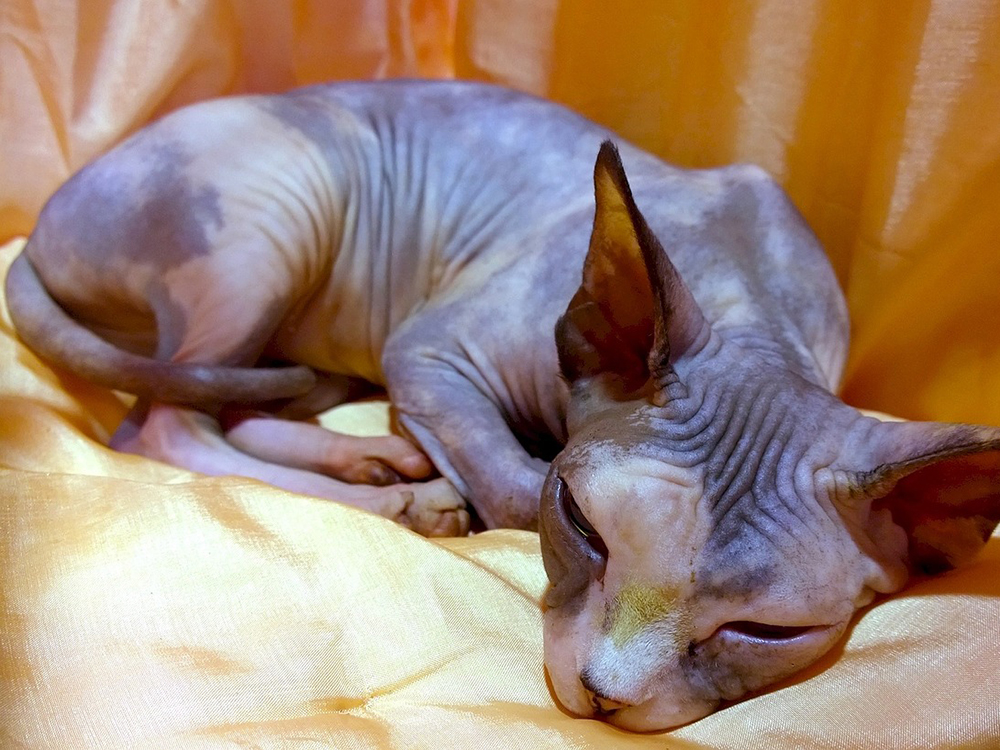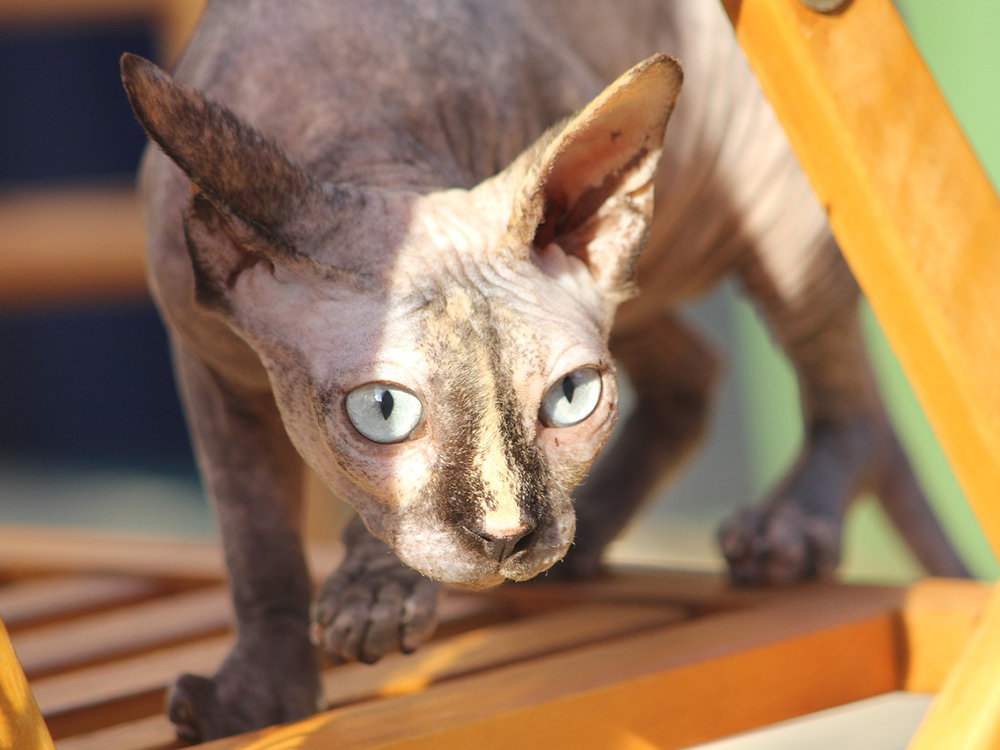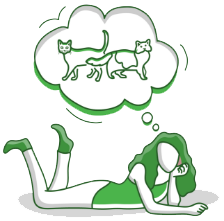
Sphynx Breed Pictures
Vital Breed Stats
| Weight: | 3 - 5 kg M | 3 - 5 kg F |
| Life Expectancy: | 12 - 15 years |
Breed Characteristics
| Size: |  |
| Grooming: |  |
| Trainability: |  |
| Good with Children: |  |
| Good with other pets: |  |
| Affectionate: |  |
| Active Level: |  |
Give a thumbs up if you love the Sphynx

0
More About the Breed
History
The Sphynx, contrary to its name, does not come from Egypt. It is an accidental breed born of natural mutation in the land of ice and snow, Canada. In 1966, a domestic shorthair feline in Ontario gave birth to a litter that had one hairless kitten. The kitten, a male, was later named Prune. Later, he was bred with his mother. This match produced a litter that had normal and hairless kittens. Some of the hairless ones where sent to Europe, where the breed was further developed.
Later in 1975, two sets of hairless kittens from different owners were born. A pair was from Minnesota, USA, named Dermis and Epidermis. The other set, a trio of kittens, were from Toronto in Ontario, Canada. These cats are considered to be the descendants of the modern Sphynx. The breed was finally introduced in the UK in 1988, through a Sphynx called Tulip. She immediately became a hit amongst cat lovers, breeders, and cat competition enthusiasts in the UK. The Sphynx has since undergone much selective breeding in order to expand its gene pool and develop a robust breed. It later received full championship recognition. Today, it is one of the most beloved and popular cat breeds in the world.
Appearance and Grooming
Although the Sphynx’s appearance, which is similar to the Egyptian mythical creature, is not for everyone, it is definitely unique. Its unusual appearance and lack of hair may make it look fragile, but the Sphynx is a strong and healthy cat. Contrary to its looks, the muscular Sphynx is not totally hairless. This medium-sized feline has a light layer of fur that gives its skin a chamois-like feel. Due to the lack of hair, this cat’s skin temperature is higher than other breeds (about 4 degrees warmer). It has large, wide ears on a wedge-shaped head, and large, slightly slanted eyes. Its paws are oval with thick pads underneath. It has a whip-like tail that tapers from the base to the tip. Sphynx kittens usually have a more wrinkled appearance, which smooths out as they develop into adults. Its weight ranges from 6 to 11 pounds.
The Sphynx comes in various colours, which are dictated by the pigment of its skin. The patterns can also vary, just as with longer-haired felines. Whilst its hairless appearance make the Sphynx seem a hypoallergenic cat, its light down prevents it from being so. Those with allergies will need to wash this cat regularly to remove dander and oil build-up. The lack of fur leads to the skin oil build-up, hence the need for a weekly bath and ear cleaning.
Temperament and Intelligence
The Sphynx is a very social and friendly cat. It likes to rub its body against humans and other animals, also in part to help keep itself warm. Intelligent, it likes to be around humans, and is great company for other cats and dogs. It likes to be the centre of attention, and will follow its human around the house. It likes to be involved in the affairs of the home. The Sphynx is playful and affectionate, which partly explains its popularity amongst pet owners today.
A vocal cat, this high-energy breed likes to play fetch and explore its surroundings. The extroverted Sphynx is rather dog-like in its personality
Nutrition and Feeding
Health and Exercise
The Sphynx, because it lacks the protection of a coat, must not be exposed to the elements. As this cat easily burns under sun light, it must not be left outdoors for long (even when wearing sunblock). As such, it should be kept as an indoor cat.
The average lifespan of the Sphynx is 13 to 15 years. Whilst this breed is generally healthy, it is prone to the following health issues:
- Respiratory infections (during first 10 weeks)
- Hypertrophic cardiomyopathy (HCM)
- Mitral valve dysplasia
Cost of Ownership
For a well-bred Sphynx, expect to shell out £250–800 for a kitten. Insurance costs will £15.5 (basic) to £26 (lifetime) a month. With its food, prepare to spend about £15–£20 monthly. For vaccinations, boosters, annual checks, and other veterinary costs, pet care costs may add up to more than £600 a year.
On average, a Sphynx owner will spend about £40–£60 per month. The insurance costs can also influence the said expenses. For its lifetime (13-15 years, the costs be as low as £6,240 to as high as £10,800 annually. This range does not include the expenses incurred in buying a Sphynx kitten.
Is a Sphynx Right for You?
- The Sphynx lacks hair and is sensitive to temperature. As such, very cold or hot climates are not suitable for this breed.
- This breed may not have a bushy coat, but it is not also hypoallergenic. It has a light coat of down that can attract dander and thus requires regular washing.
- The lack of hair leads to skin oil build-up, which necessitates regular baths.
- As the Sphynx craves attention, it will do well with owners who can provide constant companionship. Alternatively, homes that always have someone left behind is its ideal setting.
- This cat breed is susceptible to sunburn. As such, it should not be left outdoors for long









